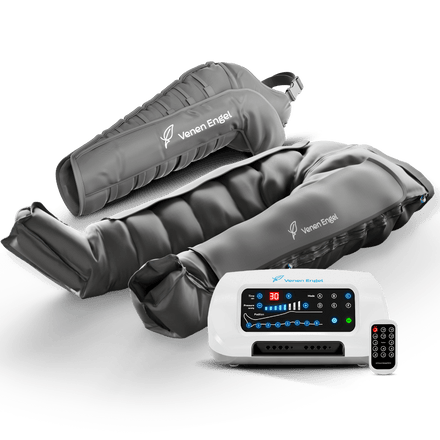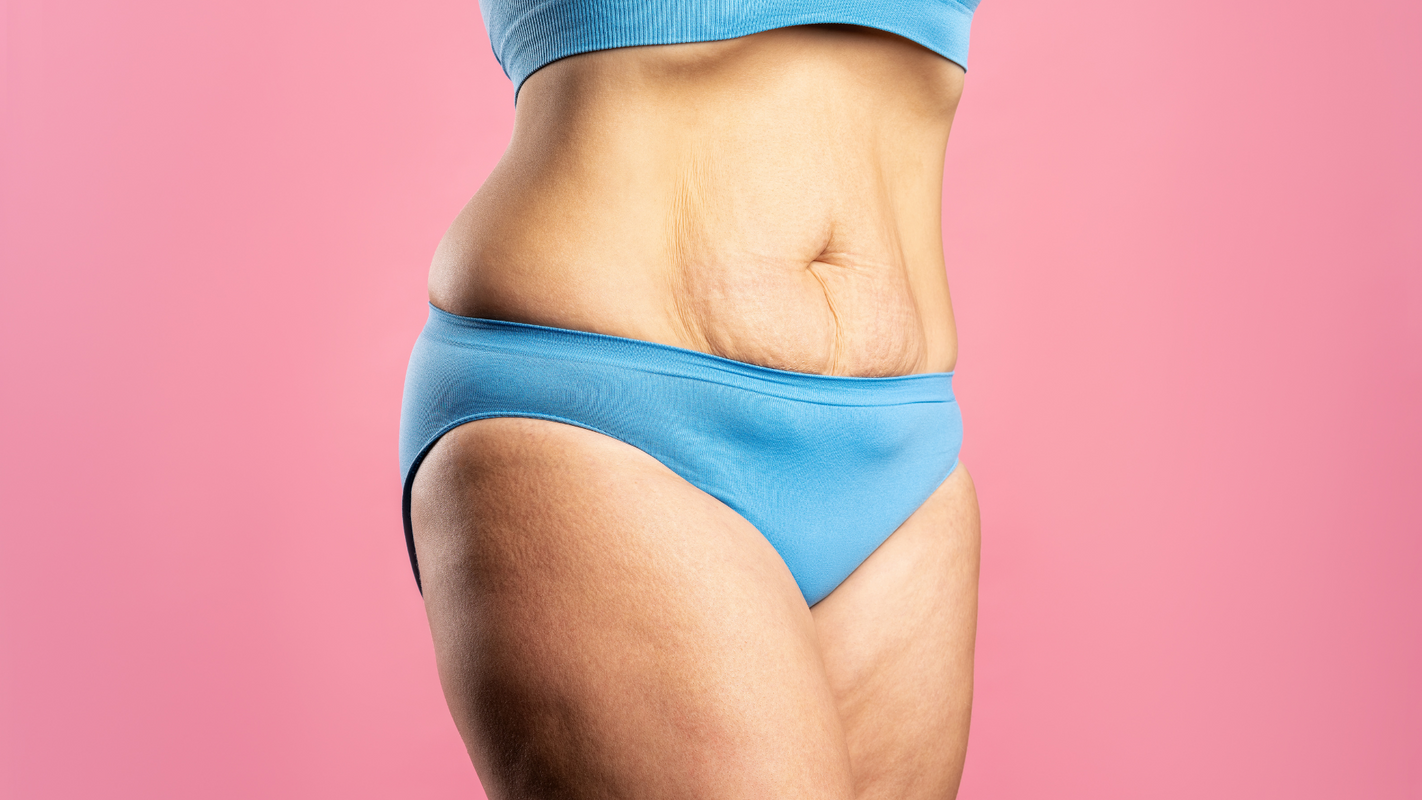The fight against lipedema and water retention can be a real challenge. The Physical and emotional strains can often seem daunting and the pursuit of impede well-being. However, we want to let you know that there are ways that Addressing the alleviation and improvement of these conditions.
In this article, we offer you a comprehensive guide with effective exercises and a customized training plan. Our goal is to help you with lipedema and Facilitate water retention. With careful research, we have found the best exercises selected and created a clear guide that accompanies you step by step.
In a society that constantly preaches the mantra "No pain, no gain" to us, we want to inform you that this mentality does not apply in your specific case. Too intense training can actually worsen the symptoms of lipedema and water retention. Therefore, it is It is crucial to listen to your body and respect its signals. Pain is a warning signal, not an indicator of progress. Training within your Comfort zone is always the best choice.
Our message is clear and straightforward: Respect for your body and listening to its Needs are of great importance. We are here to help and support you. Together we can develop an effective and enjoyable fitness routine that is specifically tailored to your Tailored to your needs and helps improve your well-being.
Planning is the key
Planning is key, and this is especially true when you are creating a fitness routine that is tailored to the tailored to the specific needs of people with lipedema or water retention. The Creating an effective training plan is a balance between what you have to do, what you what you can do, and what brings you joy.
First, you need to make an honest assessment of your current fitness level. Are you a Beginner just entering the world of fitness, or are you an experienced athlete who is looking for a looking for a new challenge? Or are you somewhere in between? Have you in the Have you already trained in the past or is this your first step in this direction? These questions are crucial to develop a plan that suits your abilities and at the same time demands.
Your training program should also be based on your individual needs. Do you have specific goals in mind? Maybe you want to improve your overall fitness to alleviate the symptoms of your lipedema or water retention. Or maybe you want to Build muscles to strengthen your body and reduce the strain on your joints. You may also want to lose weight to improve your overall health, or you just want to be more active to improve your quality of life.
Also consider what type of exercises you enjoy. It's much easier to stick to a to maintain a fitness routine if you actually enjoy the activities it includes. Maybe you love you feel like being in the water and therefore choose swimming or water aerobics. Maybe you prefer exercises that you can do at home, like yoga or Pilates. Or maybe you enjoy the sense of community in a gym or a group class.
Another important factor is time. How much time can you realistically dedicate to your fitness routine Investing? Keep in mind that it's not just about how much time you spend on the actual training you can muster, but also about how much time you have for recovery, preparation of healthy meals and the care of your body. Your training plan should not only effective, but also sustainable. It is better to have a plan that you can stick to in the long term can, as a plan that is so intense that you have to give it up after a few weeks.
At the end of the day, it's about creating a fitness routine that helps you improve your health and improving your well-being, and at the same time brings you joy. With a little planning and With patience, you can develop a plan that takes all these aspects into account and helps you achieve your goals. to reach.
An Example Plan
To give you a more concrete impression of what a fitness routine might look like, we have put together an example for you. This plan is ideal for beginners, but can be adjusted according to your can be adjusted to your current fitness level and personal preferences.
Monday: Gentle Cardio Training
Start the week with a gentle cardio workout that doesn't overstrain your body. A 20-minute walk in nature or a gentle swimming session are ideal. These activities are easy on the joints and help promote circulation, which is especially important for people with lipedema and water retention. Additionally, exercising in nature has the added benefit of calming your mind and reducing stress.


Tuesday: Strength Training
Today we focus on strength exercises. Use light weights or do bodyweight exercises to strengthen your muscles. Make sure to perform each movement correctly to avoid injuries. Exercises like leg raises, squats, or performing light weight exercises can be helpful.
Here is a specific exercise routine you can try:
Leg raise: Lie on a gym mat or a soft surface on your back. Stretch your legs straight out and slowly lift one leg off the ground. Hold for a few seconds and then lower it back down in a controlled manner. Repeat this for 10-12 repetitions on each side.
It is important that you do not overstrain your body and perform the exercises at your own pace.
Wednesday: Active Recovery
On this day, we focus on active recovery exercises. Yoga or Tai Chi can be a be an excellent option. These gentle movements not only help to improve your flexibility improve, but also help to reduce stress and enhance body awareness improve. These activities help you find inner peace and a stronger connection to establish with your body.
A great option for this day is the yoga exercise "Downward-Facing Dog." This pose helps to stretch and strengthen the entire body while simultaneously improving circulation is stimulated. Here is a guide on how you can perform this exercise:
Start in the quadruped position, with hands under the shoulders and knees under the Hips.
Slowly lift your hips up and press your palms firmly into the ground. Stretch your arms and legs out and press your heels towards the ground.
Keep your back straight and stretch it evenly. Your body forms a inverted "V" shape. Keep your neck relaxed and let your head hang between the Arms hanging.
Breathe calmly and deeply into your belly in and out. Feel the stretch in your legs, arms, and the back.
Hold this position for 5-10 deep breaths or as long as it feels comfortable for you Focus on an even breath and try, with each exhalation sink deeper into the posture.
To come out of the pose, slowly lower your knees to the floor and come back to the quadruped position.
Thursday: Strength training
Just like on Tuesday, today's focus is also on strength training. Try different exercises to train various muscle groups. For example, you could incorporate light dumbbell training for your arms and upper body exercises like push-ups on your knees.
Make sure not to overexert yourself and always listen to your body's signals.
Example exercise knee push-ups: Get into the push-up position on your knees. Make sure your back is straight and your hands are placed under your shoulders. Slowly bend your arms as you lower yourself, then push yourself back up. Perform 8-10 repetitions.


Friday: Gentle Cardio Training
End the workweek with another mild cardio session. Perhaps you want a gentle
Go on a bike tour or attend a light aqua fitness class. Choose an activity that you enjoy and that motivates you for the weekend.
Weekend: Rest days
On the weekend, it's time to give your body a well-deserved break. Rest is an essential part of any fitness routine, as it gives your body the opportunity to regenerate and repair. Use this time to relax, eat well, and sleep well. You might also want to do gentle stretching exercises to keep your body loose and flexible.

With this example routine, you get a good starting point. Remember that it's okay, Make adjustments and design the plan so that it works for you. Your Your fitness routine should adapt to you, not the other way around. And most importantly, that you enjoy the journey. enjoy!
Tips for Building a Sustainable Fitness Routine
Of course, all these tips are important, but there are other factors you should consider when creating a should consider a sustainable fitness routine, especially if you have lipedema or Dealing with water retention:
Start slowly and gradually increase: If you are just beginning your fitness journey When you start, it is important not to overstrain your body. Start with mild exercises and increase Gradually increase the intensity and duration of your training. Remember that every small progress is a success. is.
Stay consistent and be realistic: Regularity is the key to maintenance a fitness routine. It is better to train three times a week for 15 minutes than once a One hour per week. Set realistic goals that you can achieve, and be proud of yourself, when you reach them.
Practice patience and kindness towards yourself: Fitness is a journey, not a destination. It can It may take some time before you notice visible progress, but that's completely normal. Celebrate every small success and be gentle with yourself if things don't go as you imagined.
Seek Support and Community: A support group can provide you with motivation and Offer inspiration. Maybe you have a friend who joins you, or you can join a local gym or an online community. An experienced personal trainer or A therapist can help you create a tailored plan and guide you safely through the Perform exercises.
Pay attention to your diet: A balanced, healthy diet is the key to Support for your training and to enhance your overall well-being. Pay attention to a Variety of foods, including fruits, vegetables, whole grains, lean proteins, and healthy fats.
Document your progress: Record in a journal what you have done and how you how you felt. This can help you identify patterns, track your progress and to stay motivated.
Remember the importance of recovery: Your body needs time after training to Regeneration. Ensure you get enough sleep, and incorporate relaxation techniques like meditation. or deep breathing exercises into your routine.
The most important memory of this journey is that you are in control. You set the pace, you you determine the intensity, and you determine what success means to you. Every journey is unique, and your fitness journey is no exception. We believe in you and we know that you have the ability Build a fitness routine that meets your needs and goals. You can do it!




